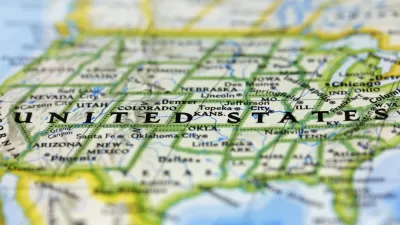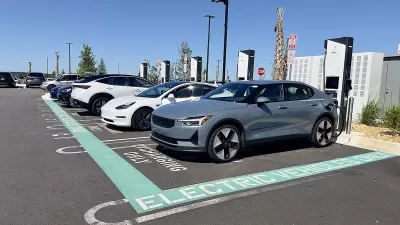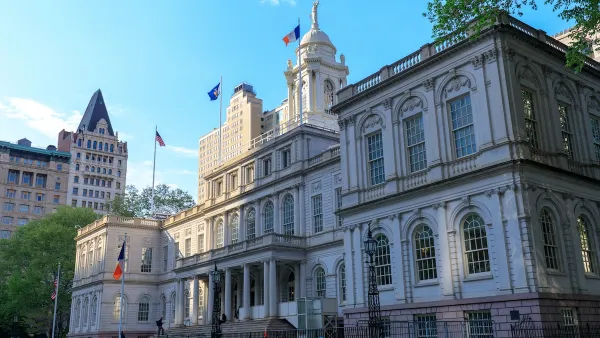Brookings illuminates which states rely heaviest on infrastructure for employment as local policymakers are struggling with reliable federal funding throughout the peak of construction season.
According to a recent post by Joseph Kane and Robert Puentes for Brookings Institute, "policymakers at the state level, in particular, are grappling with a series of infrastructure challenges given the looming shortfall in the Highway Trust Fund." To pay for needed improvements, some in the final stages of construction, states have started raising their gas taxes, turning to private funding, or supporting transportation ballot measures.
Indeed as, "more than 14.2 million infrastructure jobs are at stake in these policy discussions—the majority of which last for years beyond construction—it’s easy to see why states are acting with a sense of urgency." Taking a closer look at some of the states, California and Texas combined have about 2.7 million infrastructure jobs, based on massive trade and logistics facilities.
Moreover, when assessing the share of infrastructure jobs from total employment, "several states exceed the national average (11.0 percent), led by Alaska (15.1 percent), Wyoming (14.8 percent), North Dakota (14.4 percent), Tennessee (13.3 percent), and Louisiana (13.2 percent)."
While it is unclear in what capacity federal policymakers will be able to support infrastructure in the future, states are beginning to tackle these issues locally. These efforts, according to Kane and Puentes, are, "investing in our most fundamental physical assets, [and] they’re keeping millions of workers on the job."
FULL STORY: Ranking the Top States for Infrastructure Jobs

Planetizen Federal Action Tracker
A weekly monitor of how Trump’s orders and actions are impacting planners and planning in America.

Chicago’s Ghost Rails
Just beneath the surface of the modern city lie the remnants of its expansive early 20th-century streetcar system.

San Antonio and Austin are Fusing Into one Massive Megaregion
The region spanning the two central Texas cities is growing fast, posing challenges for local infrastructure and water supplies.

Since Zion's Shuttles Went Electric “The Smog is Gone”
Visitors to Zion National Park can enjoy the canyon via the nation’s first fully electric park shuttle system.

Trump Distributing DOT Safety Funds at 1/10 Rate of Biden
Funds for Safe Streets and other transportation safety and equity programs are being held up by administrative reviews and conflicts with the Trump administration’s priorities.

German Cities Subsidize Taxis for Women Amid Wave of Violence
Free or low-cost taxi rides can help women navigate cities more safely, but critics say the programs don't address the root causes of violence against women.
Urban Design for Planners 1: Software Tools
This six-course series explores essential urban design concepts using open source software and equips planners with the tools they need to participate fully in the urban design process.
Planning for Universal Design
Learn the tools for implementing Universal Design in planning regulations.
planning NEXT
Appalachian Highlands Housing Partners
Mpact (founded as Rail~Volution)
City of Camden Redevelopment Agency
City of Astoria
City of Portland
City of Laramie





























